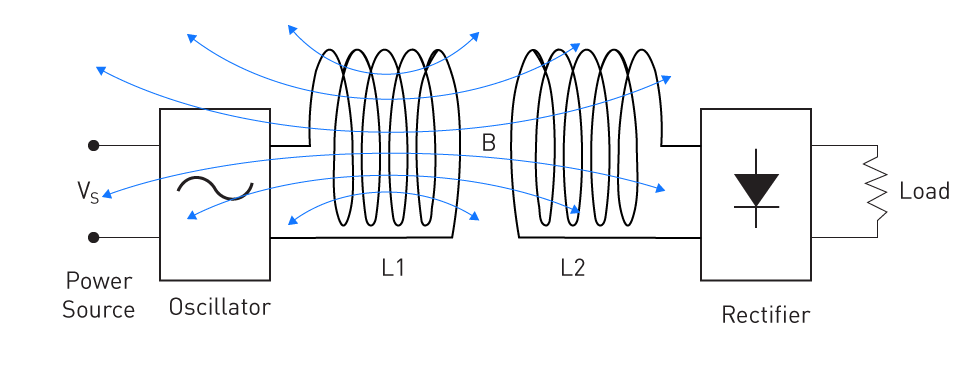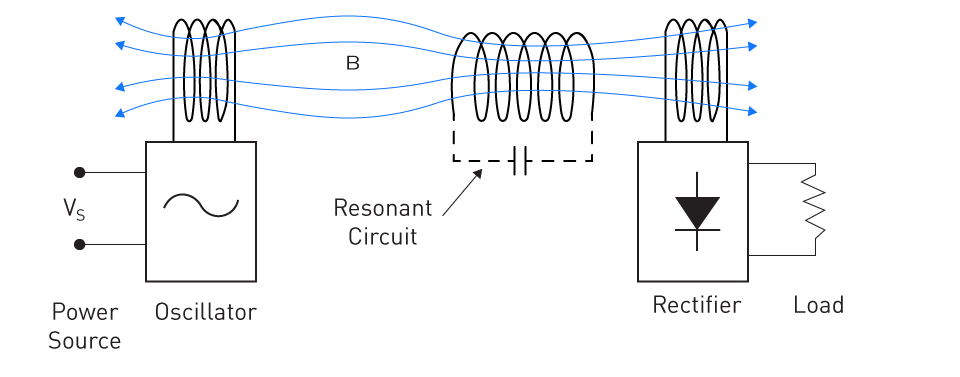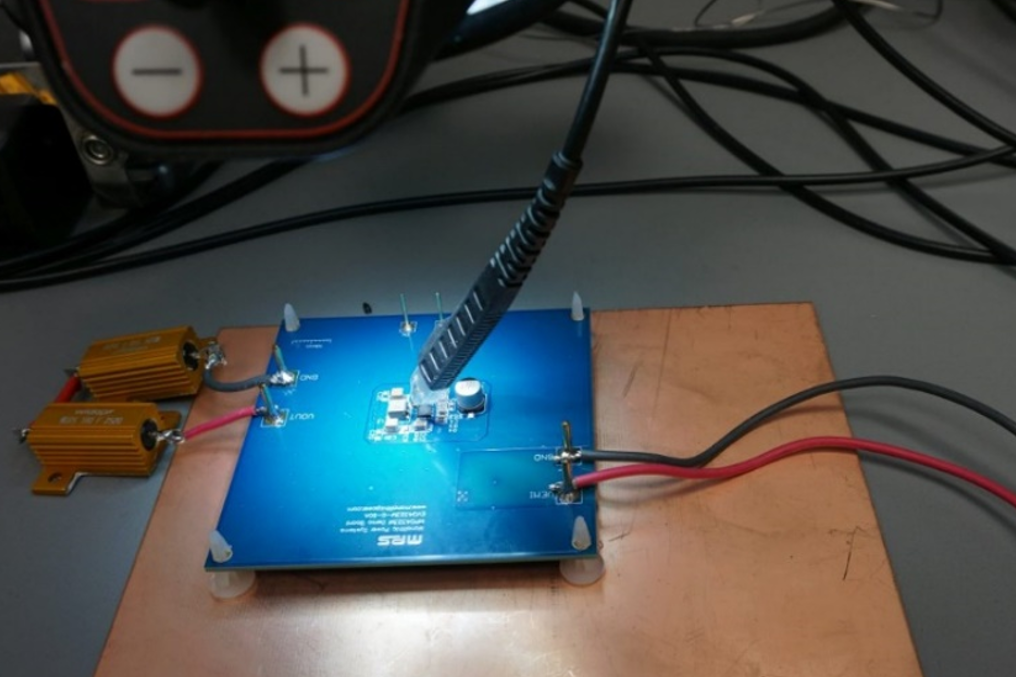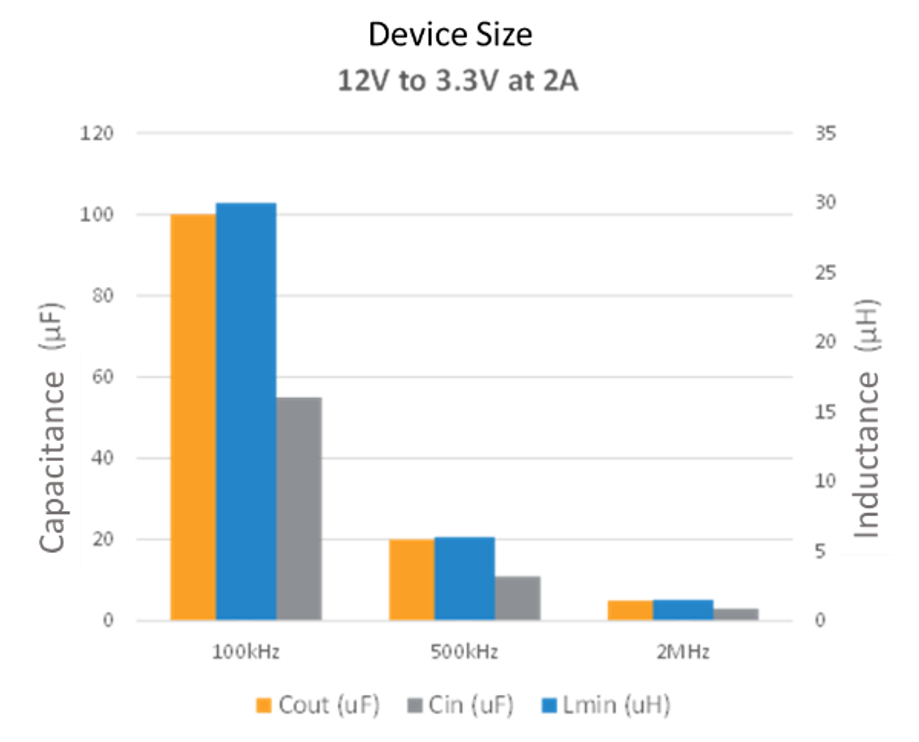Introduction to Wireless Power Transfer (WPT)
Wireless Power Transfer (WPT) is no longer the stuff of science fiction; rather, it is a reality that is rapidly expanding and finding crucial uses in a variety of industries, particularly the business of automobile manufacturing. The range of possibilities is vast and is constantly expanding, ranging from the ability to charge your electric vehicle (EV) remotely to the ability to power items that are located inside the car.
Principles and Technologies of WPT
The principles of electromagnetic induction serve as the inspiration for WPT in its most elementary form. Throughout the course of history, the discovery made by Michael Faraday that a change in the magnetic environment of a coil of wire can produce an electromotive force (EMF) in the wire serves as the fundamental basis for the work that is known as WPT. This induced electromagnetic field (EMF) can subsequently drive a current, which results in the wireless transfer of power.
WPT makes use of two primary technologies, which are as follows:
Inductive Coupling: This is a technique that involves the use of two coils, with one of them functioning as the transmitter and the other as the receiver. When an alternating current flows through the coil of the transmitter, it generates a fluctuating magnetic field. This magnetic field results in the induction of a voltage across the receiving coil when it is brought close to the receiving coil. This is the most well-known type of WPT, and it is currently being utilized in a wide variety of applications, ranging from electric vehicle chargers to toothbrush chargers.

Figure 1: Concept of Inductive Coupling Power DeliveryXXXX
Resonant Inductive Coupling: This technique is an advanced kind of inductive coupling in which the transmitter and receiver coils resonate at the same frequency. It is referred to as resonant inductive coupling. In this manner, they are able to transfer power over greater distances and with greater efficiency in comparison to the conventional method of inductive coupling.

Figure 2: Concept of Resonant Inductive Coupling Power Delivery
Benefits and Challenges of WPT in Automotive Applications
Benefits
- Convenience: The elimination of physical hookups is the key advantage, which has the advantage of being convenient. This eliminates the need to plug in and unplug electric vehicles; all that is required is to park the vehicle on top of a charging pad.
- Aesthetics and Space: Vehicle designs can be more streamlined if there is no requirement for cable and connector systems that are cumbersome. Without the clutter of charging cords, it is also possible to maximize the space available within the cabin.
- Durability: The durability of physical connectors is determined by their capacity to withstand repeated use and the effects of external conditions over time. As a result of their lack of contact, wireless systems are less likely to experience such wear and tear.
Challenges
- Efficiency: Despite the fact that great progress has been achieved, wireless power transfer (WPT) systems are typically less efficient than their cable counterparts. This results in longer charging periods and worse energy efficiency.
- Cost: The implementation of WPT technologies, particularly in public locations for the purpose of electric vehicle charging, necessitates the building of large infrastructure, which might be expensive.
- Interference: Because of the dependence on electromagnetic fields, there is the possibility of interference with other electronic systems. This is especially important when considering the context of cars, which contain a large number of embedded devices.
- Alignment: It is necessary to ensure that the transmitter and receiver coils are precisely aligned in order to achieve peak performance in terms of power transfer. The process of ensuring this alignment can be difficult, particularly in parking conditions that are constantly changing.
Although WPT presents a forward-thinking and convenient method for power transfer in automobiles, it is not without its share of difficulties. In essence, it is not without its share of obstacles. The automotive sector, on the other hand, is making significant investments in order to overcome these obstacles because of the rapid improvements in technology and the clear picture of the potential benefits that it could provide. Within the context of the automobile industry, the subsequent sections will delve more deeply into certain applications, problems, and the bright future of WPT.
Applications of Wireless Power Transfer in Vehicles
Wireless Power Transfer (WPT) has a wide range of possible applications in the automotive industry; however, two applications in particular stand out due to their transformational potential and their viability in the real world. These applications are wireless electric vehicle (EV) charging and in-cabin wireless charging for devices.
Wireless Electric Vehicle Charging
A compelling demand for charging solutions that are effective, accessible, and quick has arisen as a result of the global move towards electric vehicles (EVs). 'Park-and-charge' is a strategy that wireless electric vehicle charging takes in order to meet these standards. This approach eliminates the need for the human effort that is required to plug in a vehicle.
How it Works
- Ground-Based Transmitter: These are coils that are connected to the power grid and are typically placed beneath the surface of parking spaces. They initiate the production of a magnetic field when energized.
- Vehicle-Based Receiver: Located on the underside of the electric vehicle, the vehicle-based receiver is a coil that is responsible for capturing the magnetic field that is transmitted from the ground-based transmitter and converting it back into electricity so that the battery may be charged.
- Communication System: System: In order to assist in the beginning, monitoring, and completion of the charging process, both the transmitter and the receiver are provided with communication interfaces, which are the most common type of communication interface.
Advantages
- Convenience: The only thing that the driver needs to do is park the car in a precise position over a charging pad. There is no need for the driver to handle any heavy cords or connectors.
- Universal Access: Because there are no plugs or connectors, there is the possibility of universal compatibility, regardless of the manufacturer of the automobile.
- Weatherproof: Wireless charging systems can be engineered to be weatherproof, meaning that they are not influenced by poor weather conditions. This ensures that charging performance remains consistent.
In-Cabin Wireless Charging for Devices
Because modern automobiles are increasingly becoming linked hubs, it is of the utmost importance to ensure that electronic gadgets such as smartphones, tablets, and wearables are always powered up. The use of wireless charging within the cabin is a convenient solution.
How it Works
- Charging Mat or Surface: This is the location where consumers place their electronic devices in order to charge them. It may be integrated into the dashboard, the center console, or other areas that are directly accessible.
- Inductive Coils: The charging pad has coils that, when activated, produce a magnetic field. These coils are located beneath the surface of the platform.
- Device Compatibility: In order to be compatible, devices must either be equipped with or contained within a case that is capable of inductive charging.
Advantages
- Clutter-Free Environment: Reduces the amount of clutter in the environment by doing away with the necessity for multiple charging wires for different electronic gadgets.
- Universal Charging: The majority of in-cabin wireless charging solutions are designed to be Qi-compatible, which is a wireless charging standard that has gained widespread adoption. This gives passengers the ability to charge a broad variety of electronic devices.
- Safety: The absence of cords that drivers need to fumble with while driving results in a reduction in distractions, which in turn improves driver safety.
WPT is increasingly making its way into the automotive industry, bringing with it an increase in the level of convenience and utility that it offers to both drivers and passengers. Vehicles will increasingly become cord-free zones as technology matures and adoption rates grow. This will simplify the user experience and pave the way for a new era of power management in the automobile industry. In the following sections, we will investigate the difficulties that are inherent to this technology as well as the predicted innovations that will become available in the field of WPT.
Challenges and Considerations for Implementing WPT
In spite of the fact that the implementation of wireless power transfer (WPT) in automotive settings presents revolutionary opportunities, it is essential to investigate the difficulties and engineering concerns that are involved. The resolution of these difficulties is of the utmost importance in order to guarantee the dependability, effectiveness, and safety of WPT systems.
Efficiency and Power Transfer Rates
Gap to Wired Systems: Comparing WPT to traditional cable charging systems, the most serious difficulty that WPT faces is the efficiency gap that exists between the two types of charging systems. The methods of inductive charging necessarily include some loss of energy, particularly during the passage of the energy via the air or any other medium that is neither conductive nor non-conductive.
Resonance Tuning: When it comes to the effectiveness of WPT, resonance tuning is of utmost importance. This involves making sure that both the transmitter and the receiver are operating at the same resonant frequency. Any kind of variation can result in a reduction in the efficiency of the transfer.
Thermal Management: Inefficiencies, particularly in higher-power applications such as electric vehicle charging, can lead to significant heat generation, which necessitates the implementation of robust thermal management solutions, which further increase the cost.
Alignment and Positioning
Critical Placement: In order to achieve the highest possible level of energy transfer, the coils in both the transmitting and receiving units must be precisely aligned. Because of the misalignment, the charging efficiency can be severely reduced, which in turn can lengthen the charging time because less power can be supplied.
Automated Positioning: Some systems make use of automated car positioning or guiding systems to aid drivers in parking correctly over charging pads. This is done in order to tackle alignment concerns. Nevertheless, the installation of these systems is more complicated and expensive. Additional systems, such as the automated positioning system that VOLTEIRO has developed, are equipped with an automatic power transmitter module. A robot is able to transport the transmitter underneath the car and also rotate it in the appropriate direction with the assistance of an ultrasonic navigation system.
Flexible Coil Design: In an effort to lessen the sensitivity of the coil to alignment, researchers are investigating more flexible coil designs and multiple-coil setups. However, these designs also add complexity and potential failure points.
Safety and Electromagnetic Compatibility
EM Field Concerns: The effects of prolonged exposure to electromagnetic fields (EMF) are a major cause for concern with regard to public health. On the other hand, public perception and the possibility of long-term effects continue to be areas of active research and concern, despite the fact that the current WPT systems are designed to operate well below the unhealthy limits.
Interference Issues: The electromagnetic fields that are produced during wireless charging have the potential to cause interference with other electrical systems in the vehicle or with infrastructure in the surrounding area. It is of the utmost importance to make certain that the WPT systems do not interfere with any other essential vehicle services or external systems. Shielding techniques, such as ferromagnetic materials with good permeability for low-frequency applications below 100kHz and electromagnetic shields (basically any conductive, metallic material) for higher frequency applications, are utilized around charging coils in order to contain and direct the magnetic fields.
This is done in order to reduce the amount of electromagnetic interference (EMI) that is caused by wireless power transfer systems. By taking this approach, electromagnetic interference (EMI) is prevented from affecting electronic devices and systems in the surrounding area. The potential interference with vehicle electronic systems, such as keyless entry systems or digital radio reception, is a common problem that could arise in the absence of adequate shielding. This interference is more likely to affect medical devices, such as heart pacemakers, which are designed to withstand such external electromagnetic fields.
Foreign Object Detection: Metal objects that enter the WPT's field can become heated up as a result of induced currents, which can pose a potential risk of fire. This is referred to as foreign object detection. In order to mitigate this issue, contemporary WPT systems incorporate foreign object detection, which either stops the charging process or notifies the user who is using the system.

Figure 3: Different Methods For Foreign Object Detection
Standard Safety Protocols: As wireless power transmission (WPT) becomes more widespread, there will be an urgent need for standardized safety protocols to ensure that all systems, regardless of the manufacturer, adhere to the safety norms that have been established.
Conclusively, while it is indisputable that WPT has the potential to bring about revolutionary changes in automotive settings, the implementation of this technology on a large scale requires a methodical approach to addressing the challenges that are currently being faced. Engineers and researchers from all over the world are working together to push the limits of technology in order to make sure that the WPT systems of the future are not only convenient but also efficient, safe, and dependable. A discussion of the exciting future prospects and developments that are anticipated in the WPT domain is presented in the following section.
Future Prospects and Developments in WPT
With the progression of technology, the capabilities and scope of wireless power transfer (WPT) continue to expand, which holds the promise of bringing about revolutionary advancements in the automotive industrial sector. Within the realm of WPT, this section delves into some of the most anticipated future trends and developments that are about to take place.
Dynamic Wireless Charging for Moving Vehicles
Concept Overview: An Overview of the Concept Dynamic wireless charging, in contrast to static wireless charging, which requires the vehicle to be immobilized during the charging process, allows for the transfer of energy while the vehicle is in motion. The idea is predicated on the incorporation of wireless charging infrastructure into roadways, which would make it possible for electric vehicles (EVs) to charge while they are on the move.
Technical Challenges: In order for dynamic charging to be a viable option, there are a number of engineering challenges that need to be addressed. The management of rapid changes in connection quality due to road conditions, the management of ensuring that the embedded infrastructure can withstand varying environmental conditions and heavy road usage, and the management of ensuring that power transfer is consistent at variable vehicle speeds are some of the challenges that are involved.
Current Progress: The current state of affairs is that, although dynamic charging is still in its infant stages, a few pilot projects all over the world have demonstrated that it is feasible. The technology, though promising, requires substantial investments in infrastructure and a holistic reimagining of transportation networks.
Standardization and Interoperability
The Need for Universal Standards: The Need for Universal Standards: There is a significant risk of fragmented and proprietary systems due to the numerous manufacturers and entities creating WPT systems. Customers might be reluctant to adopt new apps as a result of this fragmentation if they were concerned about incompatibilities between various brands or geographical areas.
Global Collaborations: Global tech and automotive behemoths are working together through a number of consortiums as they recognize the necessity for standardized standards. Their objective is to create global standards that guarantee consistent and interoperable operation of WPT systems, regardless of the vendor.
Benefits of Standardization: Once established, global WPT standards may serve as a catalyst for the widespread use of wireless EV charging. Customers would gain from a widespread infrastructure for charging, secure in the knowledge that their cars are interoperable with WPT systems throughout the world.
Ongoing Challenges: Despite ongoing partnerships, financial interests and technological differences make consensus-building difficult. Nonetheless, there is hope that unified standards will be created soon due to the widespread acceptance of the value of standardization.
The ISO/IEC 15118 standard, which describes the communication protocol between electric vehicles (EVs) and the charging station, is one of the important standards being developed for wireless power transfer (WPT) in automotive applications. In order to provide wireless charging between cars and charging stations made by various manufacturers, this standard is essential.
The SAE J2954 standard, created by the Society of Automotive Engineers (SAE), is another significant one. It sets performance and safety standards for WPT systems and offers recommendations for wireless power transfer for electric cars. The goal of SAE J2954 is to guarantee compatibility between various electric car and charging equipment models and brands, enabling EV users to enjoy a more streamlined and effective wireless charging experience.
There is no denying that wireless power transfer in automotive applications has a bright future. While universal standards seek to promote worldwide adoption, innovations such as dynamic charging promise to completely reinvent mobility. Challenges remain, as with any emerging technology, but industry, academia, and policymakers working together will guarantee that WPT's potential is exploited to the fullest extent possible in the years to come. Future developments influencing vehicle power electronics will be covered in detail in the upcoming chapters.






直接登录
创建新帐号